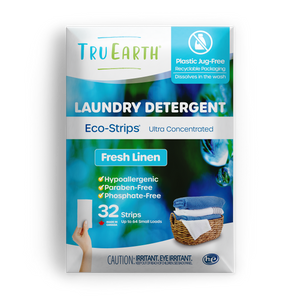Stains are an inevitable part of life. Stains can be frustrating whether it's a spill on your favorite shirt, a coffee mishap on the couch, or a sauce splatter on the kitchen counter. When these accidents happen, our instinct is often to panic and scrub the stain vigorously, hoping it will disappear.
However, this approach can often make the situation worse. This article delves into the importance of blotting stains and the reasons behind this tried-and-true method for effective stain removal.

Understanding the Basics of Stains
Before we discuss the significance of blotting, let's understand what stains are and why they're problematic. Stains are typically the result of a substance – like coffee, wine, or ink – penetrating the fibers of a fabric, carpet, or surface. The importance adheres to the material, making it difficult to remove.
When you see a fresh stain, your immediate goal is to prevent it from setting in permanently. The longer a color remains on a surface, the harder it is to remove, and in some cases, it might become impossible to get rid of completely. This is why acting swiftly and appropriately is crucial when dealing with stains.
The Wrong Way: Why Scrubbing Doesn't Work
One common mistake people make when removing a stain is scrubbing it vigorously. The idea is to break down and lift the color, but this approach can lead to several issues:
- Spreading the Stain: When you scrub a stain, you risk spreading it to a larger area. This happens because you push the substance more profoundly into the fabric or surface, making the color more extensive and more complex to remove.
- Damaging Fibers: Aggressive scrubbing can damage the fibers of fabrics or materials, especially delicate ones like silk or wool. This can result in color loss, fraying, and texture damage.
- Setting the Stain: In the case of certain substances, such as eggs, scrubbing can cause the proteins in the stain to bind with the fabric or surface. This effectively "sets" the color, making it extremely difficult to remove.
The Right Way: The Benefits of Blotting
Blotting is the recommended method for dealing with stains for several essential reasons:
- Minimizing Spread: When you blot a stain, you gently dab at it rather than rubbing or scrubbing. This reduces the risk of spreading the color to a larger area.
- Absorption: Blotting involves pressing a clean, absorbent material – like a paper towel or cloth – onto the stain. This helps absorb the paint, pulling it out of the fabric or surface.
- Preventing Damage: Unlike scrubbing, blotting is a gentle technique that is less likely to damage fibers, preserving the appearance and texture of your textiles and surfaces.
- Effective for Various Stains: Blotting is a versatile method that can be used for different types of stains, from liquid spills to solid substances. The key is to blot, not rub.
The Blotting Process
Proper blotting requires a systematic approach. Here are the steps to follow:
- Act Quickly: Time is of the essence when dealing with stains. The sooner you begin blotting, the better the chance of successful stain removal.
- Use an Absorbent Material: A paper towel, clean cloth, or even a cotton ball can be absorbent. Fold it to create a thick pad for blotting.
- Dab, Don't Rub: Press the absorbent material onto the stain. Use an up-and-down motion rather than rubbing it. Always work from the outside of the color toward the center to prevent spreading.
- Be Patient: Blotting may take some time, especially for more significant or older stains. Continue until you've absorbed as much of the stain as possible.
- Apply Cleaning Solution Carefully: If necessary, you can apply a stain-removing solution, but do so with caution. Always test the solution on an inconspicuous area first to ensure it won't damage the fabric.
- Rinse and Blot: After applying a cleaning solution, rinse the area with cold water and blot to remove residual cleaning agents.
- Air Dry: Once you've successfully blotted the stain, allow the fabric or surface to air dry. Avoid using heat, as it can set some colors.
Why Blotting is Essential
Blotting is the preferred method for dealing with stains because it offers several significant benefits:
- Preserve Fabric Quality: Blotting minimizes the risk of damaging fibers or altering the texture of fabrics, ensuring your textiles remain in good condition.
- Effectiveness: It's a proven method that works for various types of stains, including those that are notoriously tricky.
- Prevents Stain Spread: The up-and-down blotting motion prevents the stain from spreading, which can happen when you scrub it.
- Minimizes Stain Setting: By acting promptly and using blotting, you reduce the risk of the stain becoming permanent.
When to Seek Professional Help
Sometimes, stains may be too stubborn or extensive for home treatments. If you're dealing with valuable or delicate items, or if your efforts don't yield satisfactory results, it's best to consult a professional cleaner. They have the expertise and specialized tools to tackle challenging stains while preserving your belongings.

Blot Like Your Clothes Depend On It; Cause They Do!
In the battle against stains, the importance of blotting cannot be overstated. This gentle yet effective technique prevents stains from spreading, minimizes damage to fabrics and surfaces, and ensures the best chance of complete stain removal.
Remember to act quickly, be patient, and use suitable materials and methods. You'll find that blotting is a valuable skill in maintaining the cleanliness and appearance of your belongings. So next time a stain appears, resist the urge to scrub and remember to blot your way to success.


